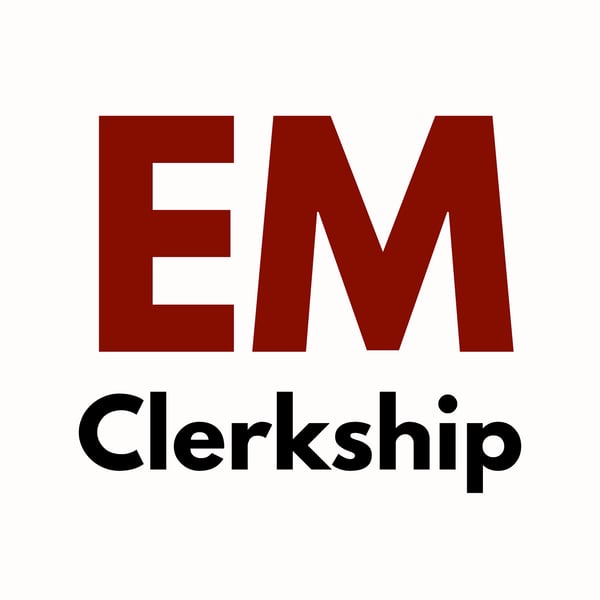How to Crush Your SLOE (Tips 11-15)
EM Clerkship
Zack Olson, MD ; Mike Estephan, MD ; Maddie Watts, MD
5 • 795 Ratings
🗓️ 24 March 2019
⏱️ 14 minutes
🧾️ Download transcript
Summary
Transcript
Click on a timestamp to play from that location
| 0:00.0 | Hello, med students. My name is Zach Olson, and thank you for downloading this week's episode of the EM |
| 0:07.7 | Clerkship podcast. We've been working our way through a series of episodes on specific tips to |
| 0:17.7 | crush your slow. How would I train you? What specific tips would I give if I knew that you were |
| 0:24.5 | going to come and rotate with me at my hospital in my department? We have covered the first 10 tips these last |
| 0:31.3 | couple weeks. So if you haven't checked those out yet, go ahead and start there. But now we're getting |
| 0:35.8 | into like the really good stuff. So tips 11 through 15 this week. And the overall theme today is going to be your history. |
| 0:44.4 | How to take a great history from the patient that is both efficient, but still allows you to give like a great thorough, impressive presentation to the attending. What are the most |
| 0:55.3 | high-guiled things you can ask about when taking a history that your attending actually needs? |
| 1:00.9 | And that when you put it in your presentation, they're going to be really impressed by and |
| 1:04.6 | you're going to actually help them out. The patient history is the foundation that a great |
| 1:08.6 | presentation is built on. what do you need without getting |
| 1:12.0 | bogged down in detail and delaying care too much because you're just like asking about everything |
| 1:17.2 | does that make sense that's what we're focusing on this week starting with tip number 11 so this is |
| 1:25.2 | actually a billing tip and it carries over into your presentation. |
| 1:30.2 | And so to bill a level five chart, you need four descriptors. Level five chart is the highest |
| 1:35.9 | level build chart. And so in almost, I will say in all, all patients that come to the emergency |
| 1:42.8 | department, you should be getting four descriptors describing each complaint that the patient has every time. And so the way it |
| 1:52.0 | typically works is attendings and residents, they're going to take those four descriptors. They're |
| 1:56.5 | going to put them in the chart. It makes the level five chart. It's called four descriptors. |
| 2:00.0 | That's what we're, that's what you need to ask on history. |
| 2:02.6 | That's what I would be wanting anyways. |
| 2:04.4 | And I would love any student who clearly laid it out for me because have you seen |
... |
Please login to see the full transcript.
Disclaimer: The podcast and artwork embedded on this page are from Zack Olson, MD ; Mike Estephan, MD ; Maddie Watts, MD, and are the property of its owner and not affiliated with or endorsed by Tapesearch.
Generated transcripts are the property of Zack Olson, MD ; Mike Estephan, MD ; Maddie Watts, MD and are distributed freely under the Fair Use doctrine. Transcripts generated by Tapesearch are not guaranteed to be accurate.
Copyright © Tapesearch 2025.

